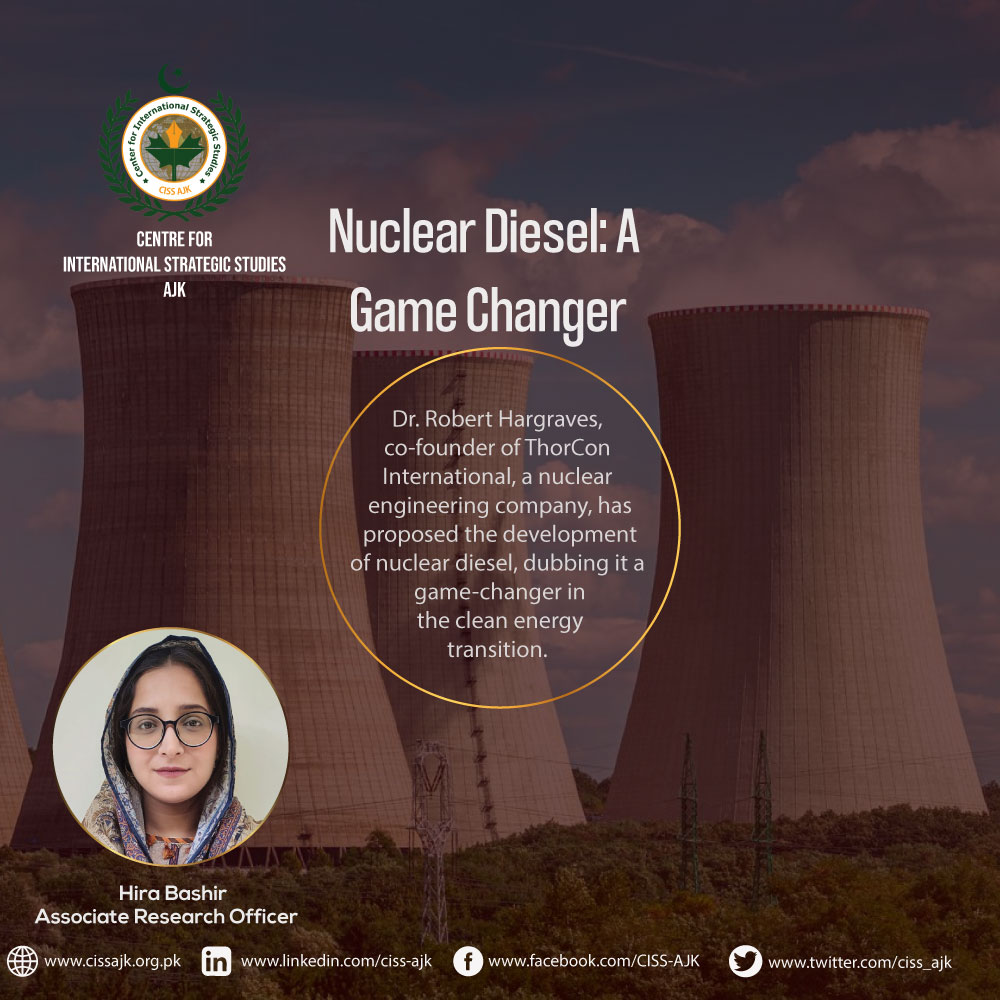707
NUCLEAR diesel is a new technology that combines nuclear power and diesel fuel to offer an alternative to traditional petroleum-based products. Carbon dioxide from fossil fuel combustion is the largest single human contribution to global warming. Petroleum based products highly affect environment ,the burning of fossil fuels, including petroleum-based products such as gasoline and diesel, is a major contributor to greenhouse gas emissions. It works by using a small and modular nuclear reactor, which generates heat. This heat is then utilized in the production of synthetic diesel fuel through a process called Fischer-Tropsch synthesis.
Small modular nuclear reactors (SMRs) are advanced nuclear reactors that have smaller power capacities compared to traditional nuclear power plants. They typically range from 50 to 300 megawatts (MW) per unit, whereas traditional reactors can exceed 700 MW per unit. SMRs offer significant cost savings and reduced construction time. They can also be deployed incrementally to match the increasing demand for power. Another advantage of SMRs is their reduced fuel requirements. They can operate for longer periods between refuelling, typically ranging from 3 to 7 years, compared to conventional nuclear plants that require refuelling every 1 to 2 years. Some SMRs are designed to operate for up to 30 years without refuelling.
Many governments, including the U.S. government, are encouraging the development of SMRs by providing incentives to make them more attractive for lenders and utilities. In 2020, the U.S. Department of Commerce launched a Small Modular Reactor Working Group to facilitate the deployment of SMRs in European markets, with the aim of positioning U.S. companies for success. Additionally, countries like Ghana and Kenya are exploring the use of SMRs to expand their power generation capacities. The use of nuclear power to produce hydrogen on a global scale for any of various possible end uses would reduce the net amount of carbon dioxide emitted into the atmosphereOne of the nuclear diesel’s exciting features is its potential for carbon neutrality. Unlike ordinary diesel fuel, which emits considerable amounts of greenhouse gases when burned, nuclear diesel emits very little, if any, carbon.
In simple terms, SMRs are smaller and more flexible nuclear reactors that can be built at a lower cost and deployed in various locations. They offer advantages such as reduced construction time, longer periods between refuelling, and the ability to match increasing power demand. Governments and countries around the world are recognizing the potential of SMRs and are supporting their development and deployment.
Dr. Robert Hargraves, co-founder of ThorCon International, a nuclear engineering company, has proposed the development of nuclear diesel, dubbing it a game-changer in the clean energy transition. According to the nuclear expert: “Advanced nuclear source energy costs can be 3.5 cents/kWh for electricity or 2 cents/kWh for high-temperature heat. This raw, source energy input cost to manufacture nuclear diesel is less than $1 per gallon. Even after adding new refinery capital costs and operations costs I expect new refineries could produce nuclear diesel at current wholesale prices near $3 per gallon.’’
Although this this is yet to be tested in the oil and gas industry, it already has a clear precedent in the chemicals industry. There is need to increase research and development spending in the domain so that it can be produced at the mass the mass level. Due to the climate change, the need for clean fuel is increasing rapidly. To achieve the target of carbon free economy, investment in diesel fuel industry is mandatory.
—The writer is Associate Research officer, at CISS AJK working on emerging technologies, nuclear politics and new trends in warfare.
Email: hirakhan5090@gmail.com



